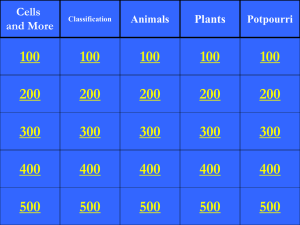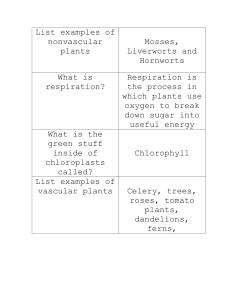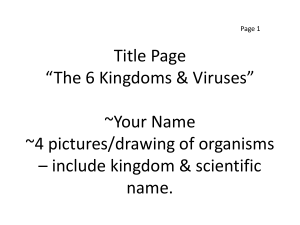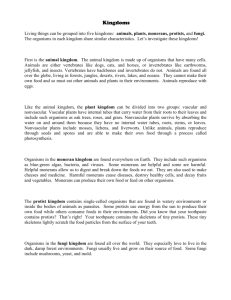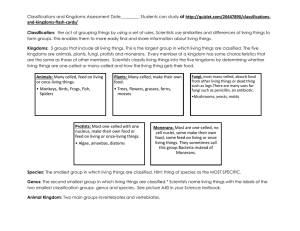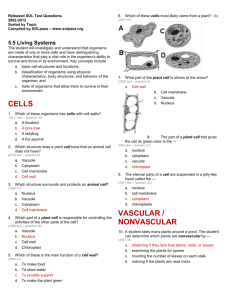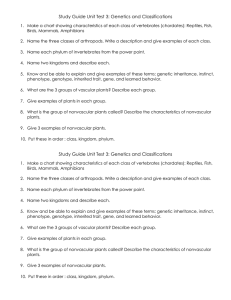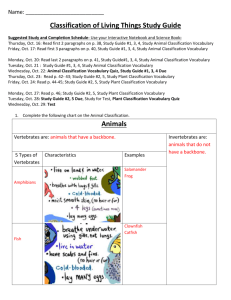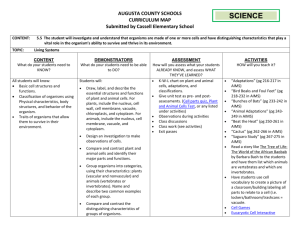Classifying Living Things Notes
advertisement
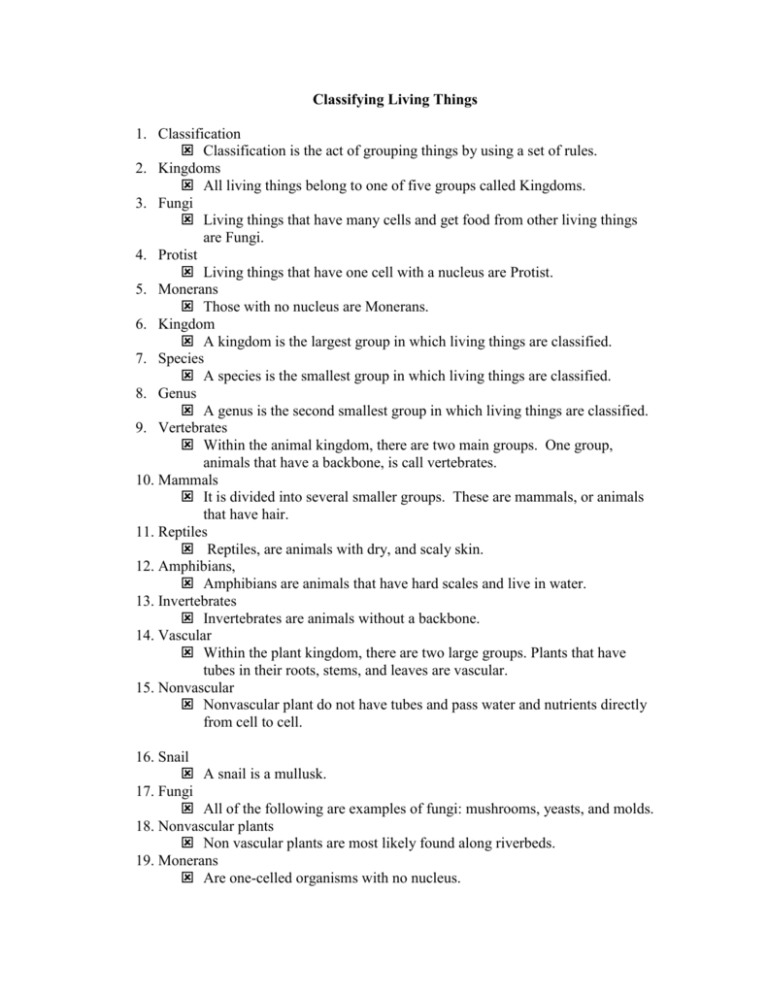
Classifying Living Things 1. Classification Classification is the act of grouping things by using a set of rules. 2. Kingdoms All living things belong to one of five groups called Kingdoms. 3. Fungi Living things that have many cells and get food from other living things are Fungi. 4. Protist Living things that have one cell with a nucleus are Protist. 5. Monerans Those with no nucleus are Monerans. 6. Kingdom A kingdom is the largest group in which living things are classified. 7. Species A species is the smallest group in which living things are classified. 8. Genus A genus is the second smallest group in which living things are classified. 9. Vertebrates Within the animal kingdom, there are two main groups. One group, animals that have a backbone, is call vertebrates. 10. Mammals It is divided into several smaller groups. These are mammals, or animals that have hair. 11. Reptiles Reptiles, are animals with dry, and scaly skin. 12. Amphibians, Amphibians are animals that have hard scales and live in water. 13. Invertebrates Invertebrates are animals without a backbone. 14. Vascular Within the plant kingdom, there are two large groups. Plants that have tubes in their roots, stems, and leaves are vascular. 15. Nonvascular Nonvascular plant do not have tubes and pass water and nutrients directly from cell to cell. 16. Snail A snail is a mullusk. 17. Fungi All of the following are examples of fungi: mushrooms, yeasts, and molds. 18. Nonvascular plants Non vascular plants are most likely found along riverbeds. 19. Monerans Are one-celled organisms with no nucleus. 20. Vertebrates Have sharp senses and large brains. 21. Bacteria Is an example of monerans. 22. Mosses Are examples of nonvascular plants. 23. Spiders Spiders are not vertebrates. 24. Clams Clams are invertebrates. 25. Vascular plants Are any plants that have flowers or cones
